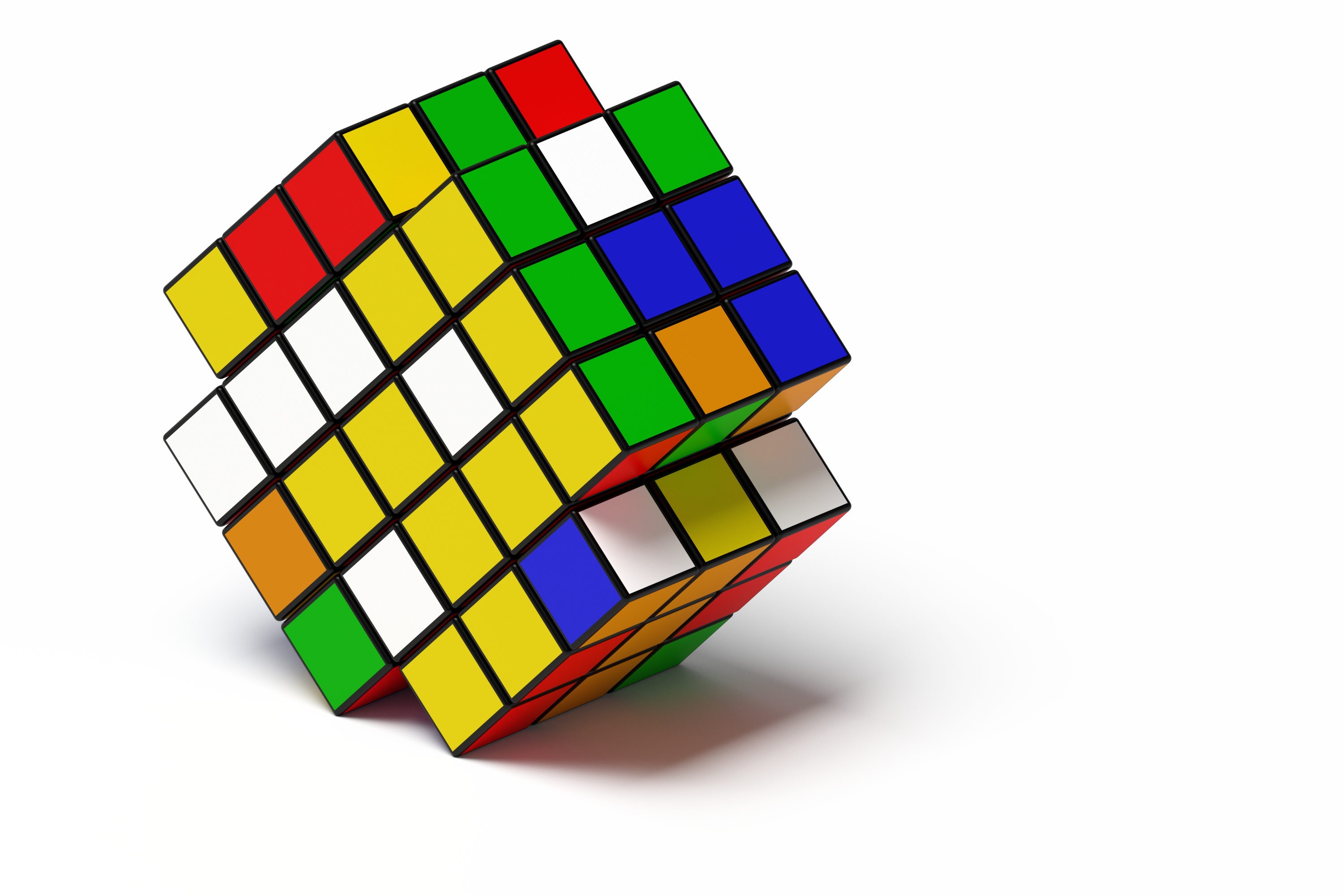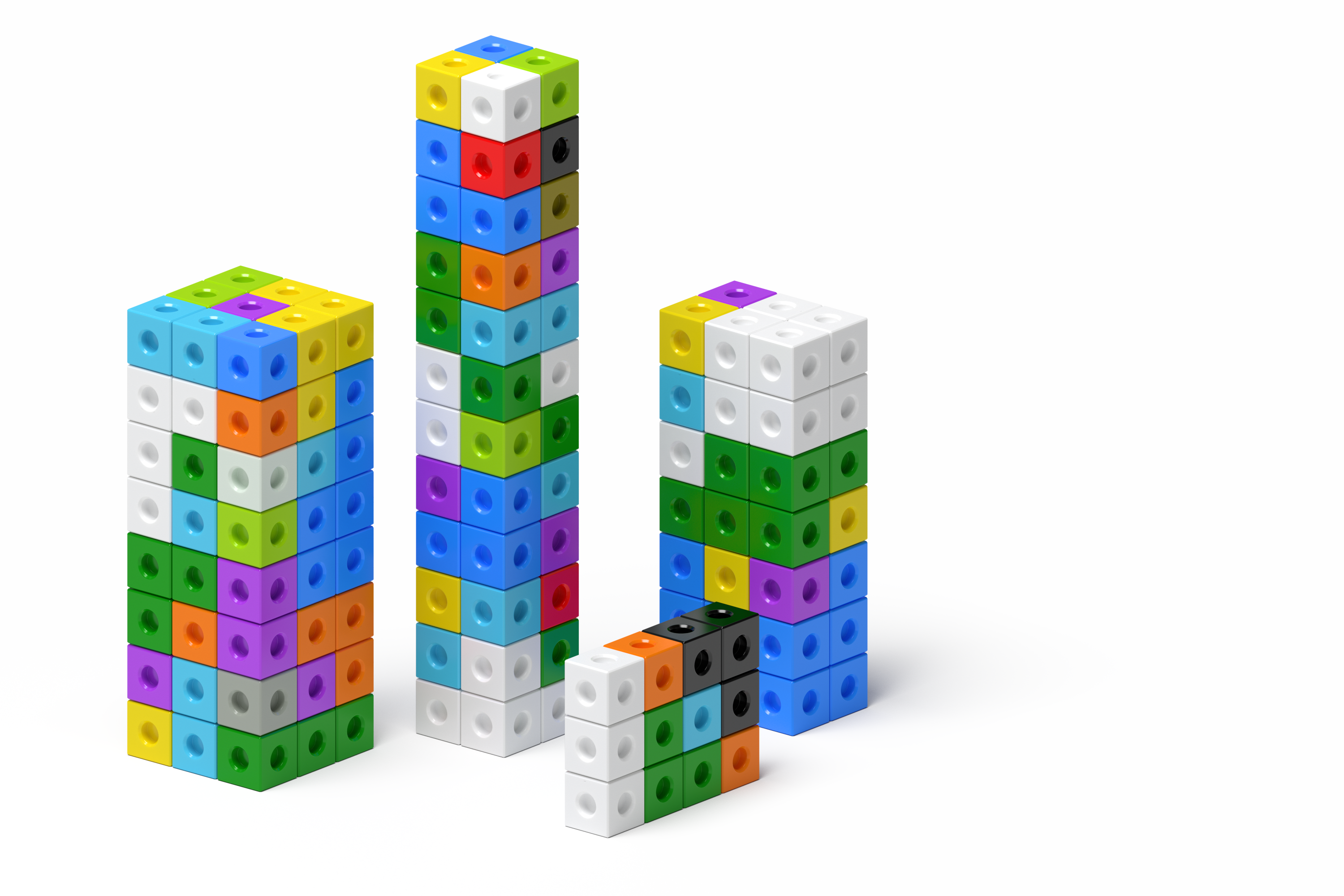Lesson 3
Volumes of Prism Drawings
Warm-up: Number Talk: Multiplication (10 minutes)
Narrative
Launch
- Display one problem.
- “Give me a signal when you have an answer and can explain how you got it.”
- 1 minute: individual think time
Activity
- Record answers and strategy.
- Keep expressions and work displayed.
- Repeat with each expression
Student Facing
Find the value of each expression mentally.
- \(6\times4\)
- \(3\times2\times4\)
- \(3\times2\times5\)
- \(3\times2\times6\)

Student Response
For access, consult one of our IM Certified Partners.
Activity Synthesis
- “How did changing one of the factors impact the product?” (Increasing one of the factors made the product get bigger by 6.)
- Consider asking:
- “How are problems 2–4 like the work we did with prisms yesterday?”
- “Who can restate _______’s reasoning in a different way?”
- “Did anyone have the same strategy but would explain it differently?”
Activity 1: Build Rectangular Prisms (20 minutes)
Narrative
The purpose of this activity is for students to build and determine the volume of rectangular prisms from images. In the activity synthesis, students look at two related prisms to encourage them to think about 8 cubes as a layer.
Advances: Listening, Speaking
Required Materials
Required Preparation
- Create a set of cards from the blackline master for each group of 4.
- Each group of 2 needs 48 connecting cubes.
Launch
- Groups of 2
- Give students access to connecting cubes.
- “You are going to build rectangular prisms shown on cards. Before we look at the cards, what information in the image will help you build the prism?” (The number of cubes in each layer and the number layers.)
- Share responses.
- “Now, you will each pick a card, build the prism, and find its volume. Explain how you found the volume to your partner and then pick another card.”
Activity
- Monitor for students who discuss:
- how many cubes are in each layer.
- how the cubes are arranged in each layer.
- how many layers are in the prism.
- Mathematical Community: As students work, monitor for examples of the “Doing Math” actions.
Student Facing
The prisms on the cards are completely packed with unit cubes.
- Pick a card.
- Build the rectangular prism.
- Find the volume. Explain how you found the volume to your partner.
- Repeat.

Student Response
For access, consult one of our IM Certified Partners.
Advancing Student Thinking
Activity Synthesis
- Display Card E
- “How did you build this rectangular prism?” (I counted 8 cubes and then made a stack of 8 cubes.)
- “What is the volume of this rectangular prism? How do you know?” (8 cubes because I counted 8 cubes.)
- Display Card A
- “How did you build this rectangular prism?” (I saw that there are 8 cubes on the top and bottom in 2 rows of 4. Then I built it up until it was 3 cubes high.)
- “What is the volume of this rectangular prism? How do you know?” (24 cubes because there are 3 sets of 8 cubes and \(3\times8=24\))
Activity 2: Layers, layers, and more layers (15 minutes)
Narrative
The purpose of this activity is for students to find the volume of larger rectangular prisms shown in images. In previous lessons, students built rectangular prisms out of cubes and counted the cubes to determine the volume of the rectangular prisms. In this activity, the prisms were intentionally chosen to encourage students to use the layered structure of the prism to determine the volume of the prism (MP7). When students connect this structure to the operation of multiplication and use expressions and equations to find the volume, they decontextualize the geometric structure to solve the problems (MP2).
Supports accessibility for: Visual-Spatial Processing, Conceptual Processing
Required Materials
Materials to Gather
Required Preparation
- Give students access to connecting cubes.
Launch
- Groups of 2
- Display the first prism.
- “How would you describe this prism?” (There are 5 layers and each layer has 8 cubes or there are 2 layers and each layer has 20 cubes in it.)
- Give students access to connecting cubes.
Activity
- 10 minutes: independent work time
- 2 minutes: partner discussion
- Monitor for students who use the layered structure to determine the volume.
Student Facing
The prisms are completely packed with unit cubes. Determine the volume of each prism. Explain or show your reasoning.
Student Response
For access, consult one of our IM Certified Partners.
Advancing Student Thinking
If students do not notice that each prism has one more layer of 20 cubes, consider asking, “What is the same about each of these prisms? What is different?”
Activity Synthesis
- Invite students to share how they found the volume of the rectangular prisms.
- Display image of the first prism.
- “The expression \(5\times8\) represents the volume of the prism. Where do you see 5 groups of 8 cubes in this prism?” (The top and bottom are 2 by 4 so there are 8 cubes on top and bottom. There are 5 of those layers so that is \(5\times8\).)
- “What do these rectangular prisms have in common?” (They are all 5 cubes high. They can all be broken into 5 equal layers or groups. They also all have a side that is 4 cubes long. They can all be broken into layers with 20 cubes.)
- If time permits, ask “Who saw the layers differently?” (For the first prism, I used the side layer of 10 cubes. I multiplied 10 by 4 layers to get 40.)
Lesson Synthesis
Lesson Synthesis
Discussion or journal prompt: “What do you know about finding the volume of a prism made of cubes after today’s activities? Is there anything you have questions about?”
Share responses or read journals after class.
Math Community
- After the Cool-down, ask students to individually reflect on the question “Which ‘Doing Math’ action did you feel was most important in your work today, and why?” Have students write their responses on the bottom of their Cool-down paper, on a separate sheet of paper, or in a math journal.
- Collect and read their responses after class. These responses will offer insight into how students feel about their own mathematical work and help you make personal connections to the norms they will be creating during Days 4–6.
Cool-down: Jada's Prism (5 minutes)
Cool-Down
For access, consult one of our IM Certified Partners.


